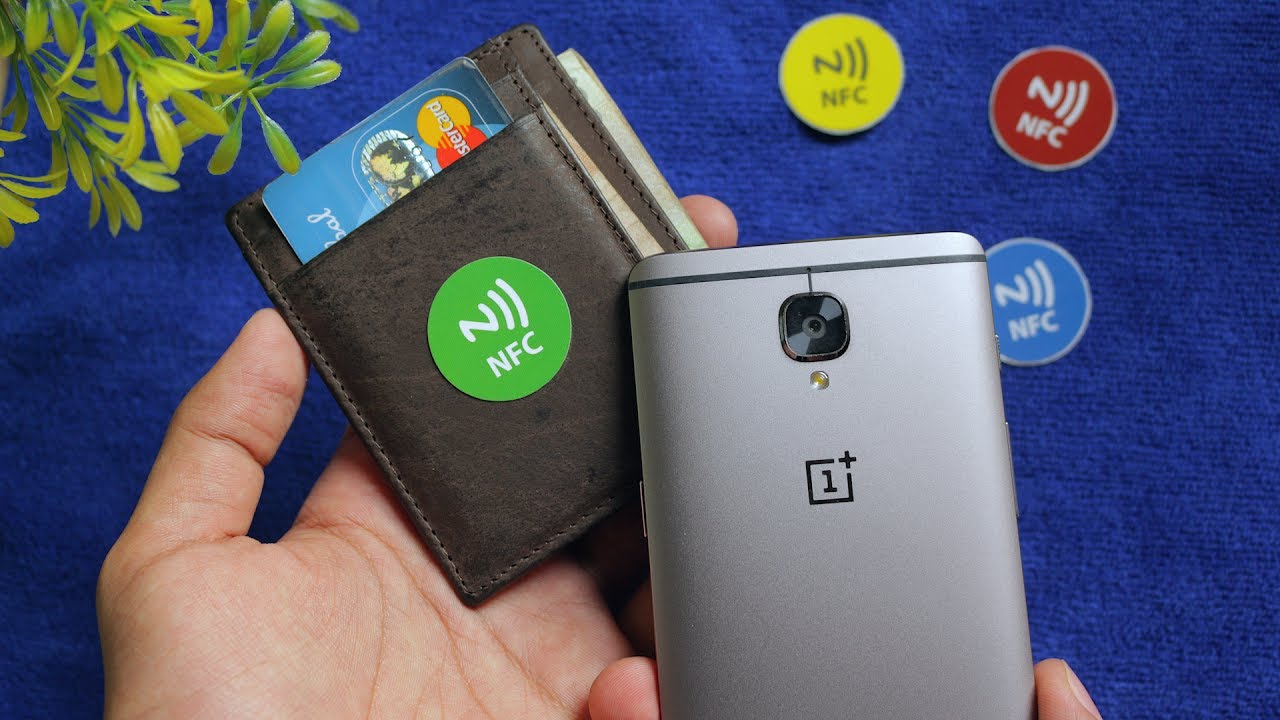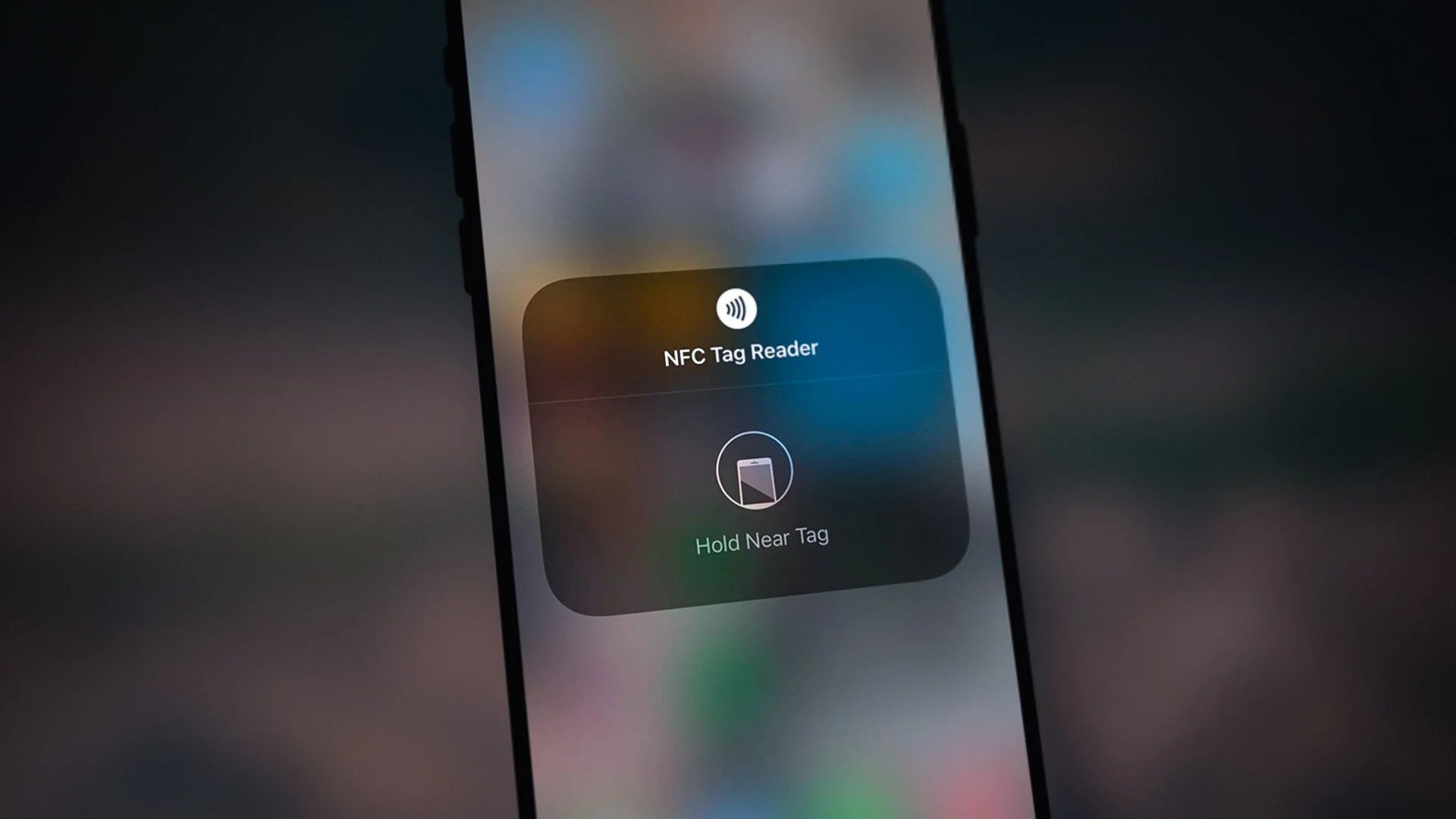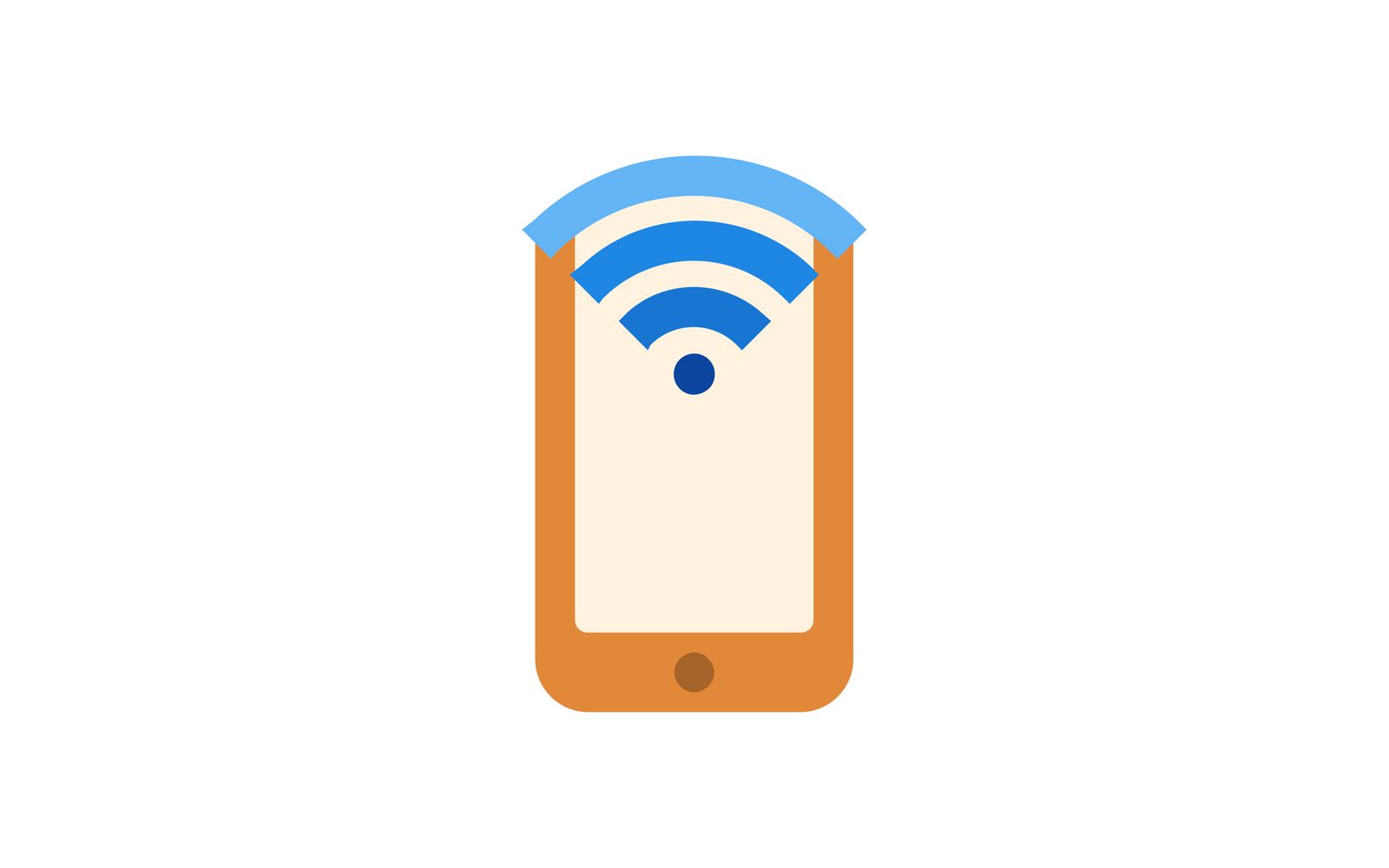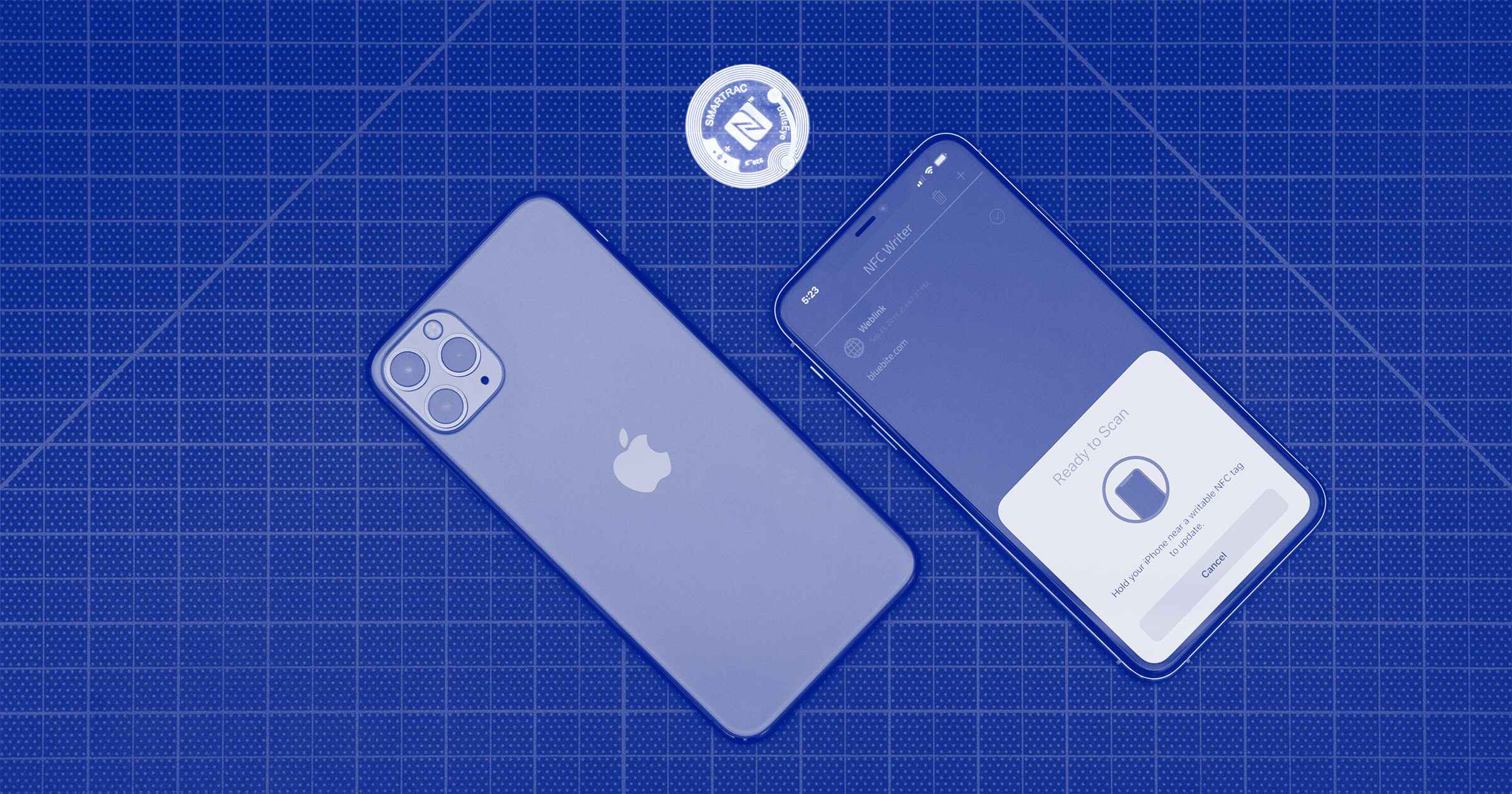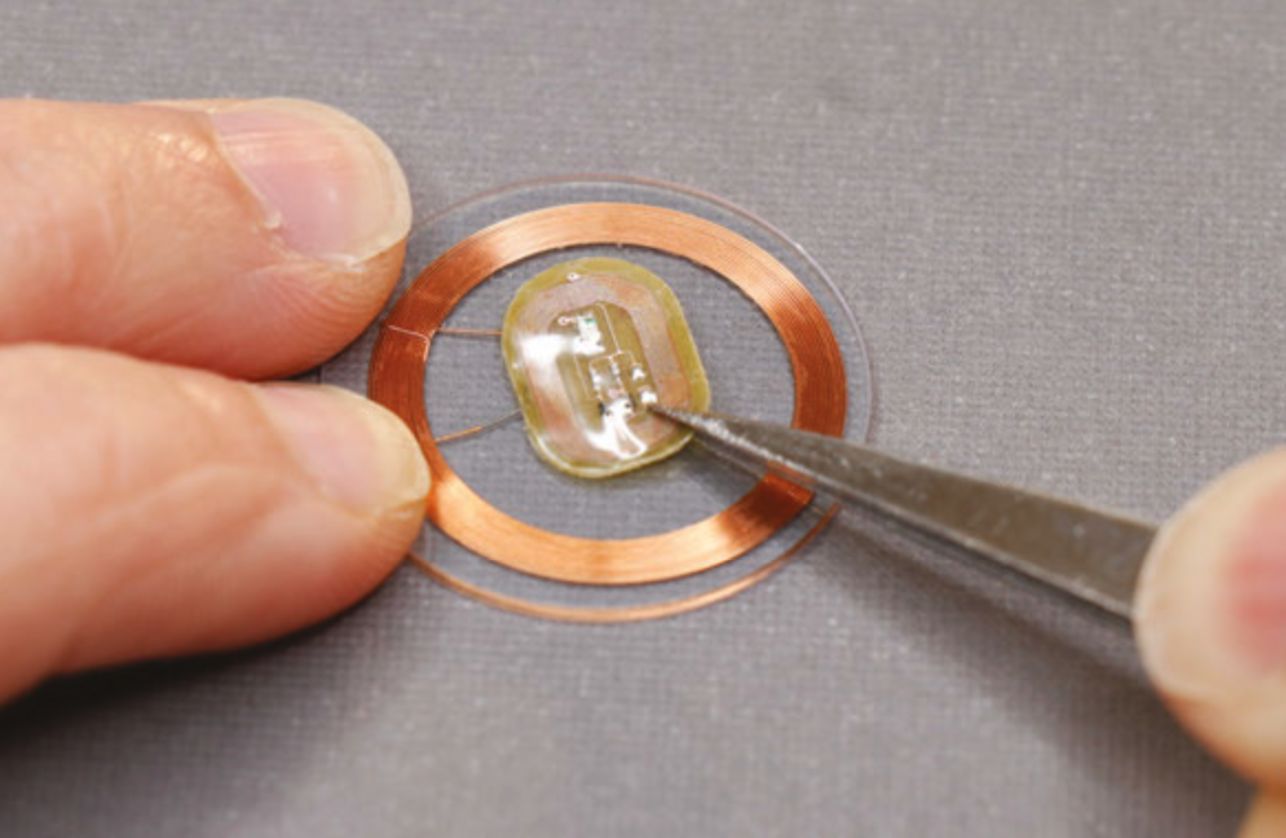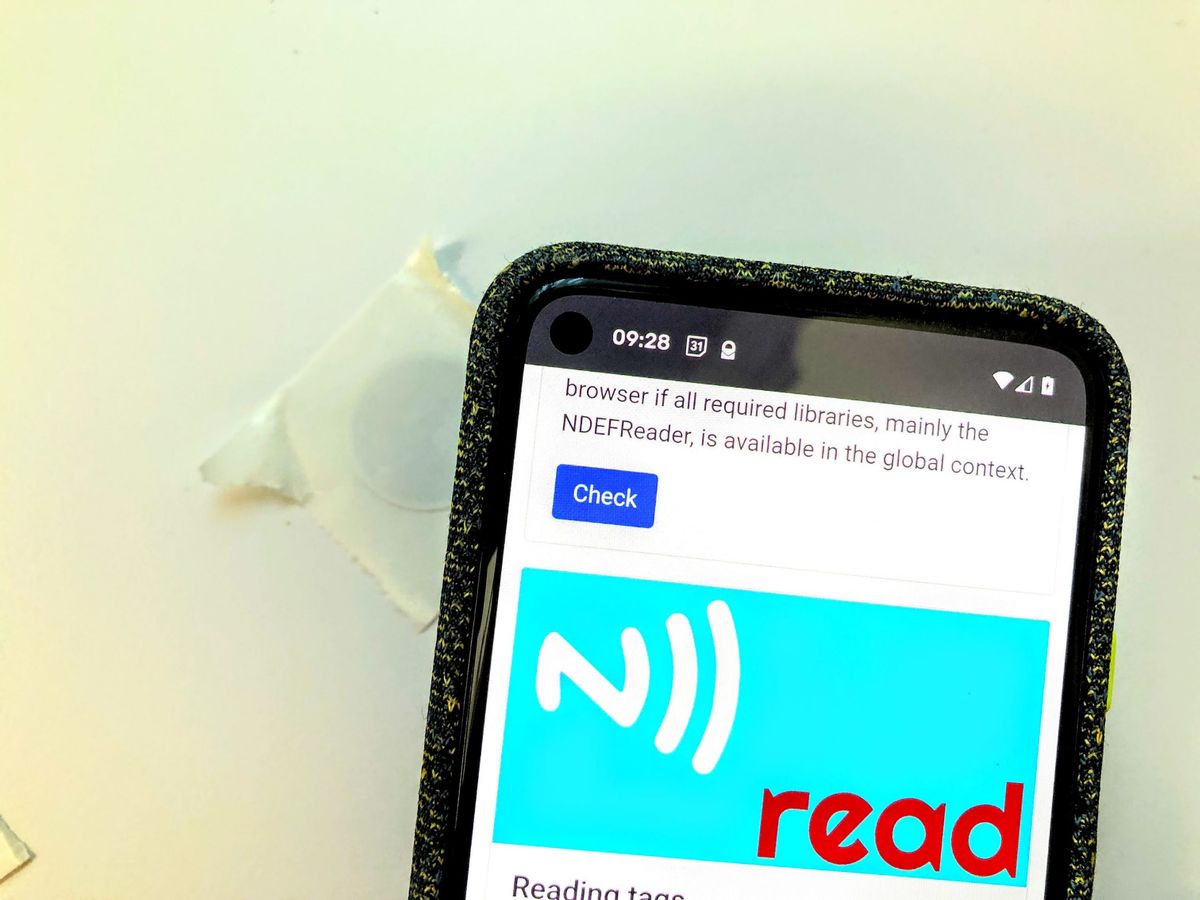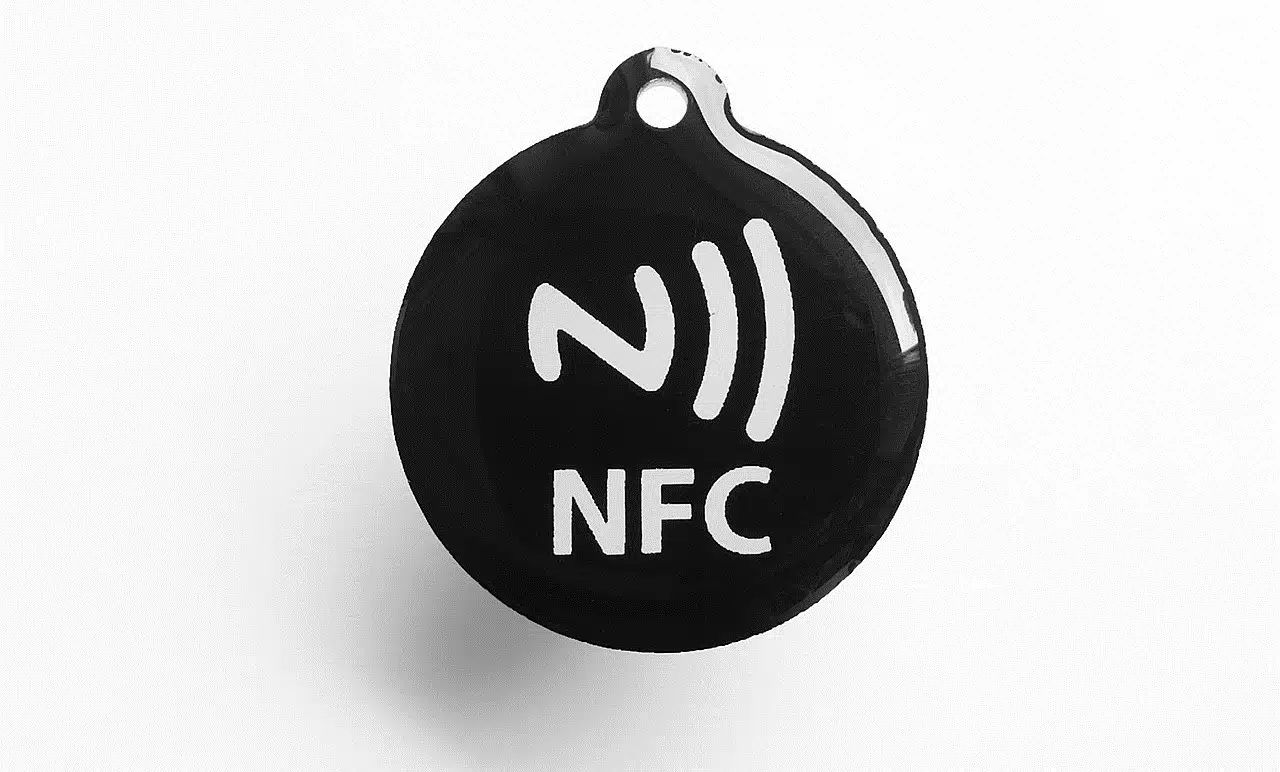Introduction
Welcome to the world of NFC technology! In this article, we will explore what NFC is and how you can make the most of it by using NFC tags. If you’re new to NFC, don’t worry – we will start at the basics and guide you through the process. By the end of this article, you’ll have a good understanding of NFC and its applications.
NFC, which stands for Near Field Communication, is a wireless communication technology that allows devices to exchange data within a close range. It is often used for contactless payments, ticketing, and information sharing. NFC tags, in particular, are small electronic chips that can store and transmit data when placed near an NFC-enabled device. This opens up a world of possibilities for automation, convenience, and personalization.
Imagine being able to program an NFC tag to automatically turn on your Wi-Fi, adjust the brightness of your phone, or launch specific apps with just a tap. NFC tags give you the power to simplify your daily tasks and create a personalized, automated experience.
But how does NFC work? NFC relies on electromagnetic induction to establish a connection between two devices in close proximity. When an NFC-enabled device, such as a smartphone, is brought near an NFC tag, the tag’s antenna generates a magnetic field. The device’s built-in NFC antenna picks up this signal and enables communication between the two.
Now that we have a basic understanding of NFC, we can dive deeper into the details of using NFC tags. In the next sections, we will explore how to choose the right NFC tag, how to write and read data from NFC tags, and some creative ways to use them for automation. We will also discuss security considerations and troubleshooting tips to ensure a smooth experience.
So, let’s get started and unlock the full potential of NFC technology with NFC tags!
What is NFC?
NFC, which stands for Near Field Communication, is a wireless communication technology that allows devices to exchange data within a close range. It is a short-range communication protocol that operates at a frequency of 13.56 MHz and operates at a maximum range of about 4 centimeters. NFC is a subset of radio-frequency identification (RFID) technology and is designed for intuitive and simple interactions between devices.
One of the key features of NFC is its ability to enable contactless transactions, making it widely used for mobile payments, access control, and ticketing systems. NFC-enabled devices, such as smartphones, tablets, or wearable devices, have an NFC chip that allows them to interact with other NFC-enabled devices or NFC tags.
NFC technology uses electromagnetic induction to establish a connection between two devices. When an NFC-enabled device is brought near an NFC tag or another NFC device, it generates a magnetic field. The receiving NFC device or tag picks up this magnetic field, and communication between the two devices is established.
Unlike other wireless communication technologies like Bluetooth or Wi-Fi, NFC requires the devices to be very close to each other, typically within 4 centimeters. This close proximity ensures secure communication and minimizes the chances of interference from other devices.
With NFC, you can transfer data, initiate transactions, or exchange information just by bringing two devices close together. This makes NFC a convenient and user-friendly technology for various applications.
NFC technology has gained popularity in recent years due to its ease of use and wide range of applications. Apart from mobile payments and contactless transactions, NFC can be used for sharing contact information, connecting to Wi-Fi networks, launching apps, controlling smart home devices, and much more.
Overall, NFC is a versatile technology that enables seamless communication between devices and opens up a world of possibilities for convenient and interactive experiences.
How Does NFC Work?
NFC, or Near Field Communication, works on the principles of electromagnetic induction and radio waves to establish communication between devices. It allows for quick and secure data transfer by simply bringing two NFC-enabled devices close together.
When an NFC-enabled device, such as a smartphone, comes into proximity with another NFC device or an NFC tag, the two devices create a connection using mutual electromagnetic induction. This process involves the exchange of radio waves between the devices, allowing data to be transmitted.
NFC operates at a frequency of 13.56 MHz, which is within the high-frequency range. This frequency allows for short-range communication, typically within 4 centimeters, ensuring that the interaction is intentional and secure.
There are two modes of operation in NFC: active and passive. In active mode, two NFC-enabled devices communicate directly with each other by generating their own electromagnetic fields. This mode is commonly used for peer-to-peer file sharing or communication between two smartphones.
In passive mode, an NFC-enabled device, such as a smartphone, interacts with passive NFC tags or other contactless devices. In this mode, the NFC-enabled device generates an electromagnetic field to power the passive device or tag. The passive device or tag then responds by modulating the electromagnetic field in a way that carries data or information.
One of the key features of NFC is that it supports three different operational modes: reader/writer mode, card emulation mode, and peer-to-peer mode.
In reader/writer mode, an NFC-enabled device acts as a reader to read data from an NFC tag. It can also write data onto the tag, enabling information storage and retrieval.
In card emulation mode, an NFC-enabled device emulates a contactless smart card, allowing it to be used for mobile payments or access control. This mode allows the device to interact with existing contactless card infrastructure, such as payment terminals or access gates.
In peer-to-peer mode, two NFC-enabled devices exchange data and interact with each other. This mode is often used for file sharing, gaming, or other applications that require direct communication between devices.
Overall, NFC technology simplifies the process of data exchange and allows for seamless communication between devices. Its versatility and ease of use make it an ideal choice for various applications, from mobile payments to device connectivity.
Getting Started with NFC
If you’re ready to explore the world of NFC, getting started is easier than you might think. To begin using NFC, you’ll need an NFC-enabled device, such as a smartphone or tablet, and NFC tags that you can program and interact with. Here are the key steps to get started with NFC:
- Check NFC Compatibility: First, ensure that your device is NFC-enabled. Most modern smartphones and tablets have built-in NFC capabilities. You can verify this in the device settings or by checking the specifications on the manufacturer’s website.
- Enable NFC: Once you confirm that your device supports NFC, make sure it’s turned on. Go to the device settings and locate the NFC settings. Toggle the NFC switch to enable it.
- Obtain NFC Tags: NFC tags are small, inexpensive electronic chips that you can program and use for various purposes. You can purchase them online or at technology stores. Choose NFC tags that suit your needs, considering factors like storage capacity, durability, and compatibility with your device.
- Install NFC Apps: To maximize the use of NFC tags, you might need to install dedicated NFC apps on your device. These apps provide a user-friendly interface to interact with the tags, read and write data, and perform specific actions. Visit your device’s app store and search for NFC apps to find the best options available.
- Program NFC Tags: Once you have the NFC tags and NFC apps installed, you can begin programming the tags for specific tasks or functions. Depending on the app you’ve chosen, the programming process may vary. Typically, you’ll need to open the NFC app, follow the instructions to write data onto the tag, and save the desired settings.
- Experiment and Explore: Now that your NFC tags are ready, it’s time to explore their capabilities and unleash the power of automation and convenience. Experiment with different scenarios by placing the NFC tags in various locations or attaching them to objects. Use the NFC-enabled device to interact with the tags and perform the programmed actions. Whether it’s launching apps, adjusting settings, or automating tasks, the possibilities are endless.
Remember, NFC technology opens up a wide range of applications, so don’t limit yourself to just one use case. Be creative and explore different ways to make the most of NFC tags in your daily life.
With these steps, you’re well on your way to harnessing the potential of NFC technology and enjoying the convenience and simplicity it offers. Get started with NFC today and unlock a whole new level of functionality with just a simple tap.
Choosing an NFC Tag
When it comes to choosing an NFC tag, there are various factors to consider to ensure that it meets your specific requirements. The right NFC tag for you will depend on the intended use, storage capacity, durability, and compatibility with your NFC-enabled device. Here are some key considerations to keep in mind when selecting an NFC tag:
- Type of NFC Tag: NFC tags come in different types, including NFC stickers, keychains, wristbands, and embedded tags. Consider the form factor that best suits your needs. NFC stickers are versatile and can be easily attached to objects, while keychains and wristbands offer portability and convenience.
- Storage Capacity: NFC tags have varying storage capacities, ranging from a few kilobytes to several megabytes. Evaluate the amount of data you need to store on the tag, such as a URL, contact information, or specific instructions. Choose an NFC tag with sufficient storage capacity to accommodate your requirements.
- Durability: Depending on the intended use, durability can be a crucial factor. If you plan to use the NFC tag in outdoor or rugged environments, consider options that are waterproof, dustproof, or have a protective casing to ensure longevity.
- Read/Write Capability: Some NFC tags are read-only, meaning that once the data is programmed onto the tag, it cannot be modified. If you require the flexibility to update or rewrite data on the tag, choose an NFC tag with read-write capability.
- Compatibility: Ensure that the NFC tag you choose is compatible with your NFC-enabled device. While most NFC tags work seamlessly with a wide range of devices, it’s always recommended to double-check compatibility to avoid any compatibility issues.
- Brand and Quality: When purchasing NFC tags, consider brands that have a good reputation and positive customer reviews. It’s important to choose high-quality NFC tags to ensure reliable and consistent performance.
It’s worth noting that the price of NFC tags may vary based on their features and quality. While it’s tempting to opt for the cheapest option, investing in higher-quality NFC tags can result in a better user experience and longer lifespan.
Lastly, consider the specific use cases you have in mind for the NFC tags. If you plan to use them for personal use, such as automating tasks on your smartphone, you may only require a few NFC tags. However, if you’re implementing NFC tags for business or commercial purposes, you may need a larger quantity.
By carefully considering these factors and selecting NFC tags that meet your requirements, you can ensure optimal performance and satisfaction with your NFC-enabled device. So, take your time to research and choose the NFC tags that best suit your needs and unlock the full potential of NFC technology.
Writing Data to an NFC Tag
One of the key features of NFC technology is its ability to read and write data onto NFC tags. By programming NFC tags, you can store information, configure settings, or trigger specific actions with a simple tap. Here’s a step-by-step guide on how to write data to an NFC tag:
- Choose an NFC Writing App: To write data onto an NFC tag, you’ll need a dedicated NFC writing app on your NFC-enabled device. There are various apps available on app stores, so choose one that suits your needs and has good user reviews.
- Open the NFC Writing App: Launch the NFC writing app on your device.
- Select the Data Type: Depending on the app, you may be prompted to select the type of data you want to write onto the NFC tag. This could include options such as a URL, a text message, a phone number, or even a specific action or setting.
- Enter or Select the Data: Enter the data you want to write onto the NFC tag. For example, if you selected a URL type, enter the desired URL. If you chose to trigger a specific action, select the action from the available options.
- Place the NFC Tag Near the Device: Bring the NFC tag close to your NFC-enabled device. The device should detect the tag and prompt you to write data onto it.
- Write the Data: Follow the on-screen instructions provided by the NFC writing app to initiate the writing process. Once the writing process starts, hold the NFC tag near the device until the app confirms that the data has been successfully written.
- Test the NFC Tag: After writing the data onto the NFC tag, you can test its functionality. Bring the NFC tag close to your device to trigger the programmed action or retrieve the stored information.
It’s important to note that different NFC writing apps may have slightly different interfaces and functionalities. Some apps provide advanced features, such as conditional triggers or encryption, while others offer a more straightforward approach. Experiment with different apps to find the one that best suits your requirements.
Additionally, keep in mind that certain types of data, such as encryption keys or sensitive information, may require additional security measures. Consult the documentation and guidelines provided by the NFC writing app to ensure that you’re following best practices for data security.
By following these simple steps and using a reliable NFC writing app, you can easily write data onto NFC tags and unlock the full potential of NFC technology. Whether it’s automating tasks, sharing information, or enhancing convenience, NFC tags provide endless possibilities for a personalized and streamlined experience.
Reading Data from an NFC Tag
Reading data from an NFC tag is a simple and intuitive process that allows you to retrieve information or trigger actions by bringing an NFC-enabled device close to the tag. Whether it’s accessing a URL, viewing contact details, or retrieving configuration settings, here’s a step-by-step guide on how to read data from an NFC tag:
- Ensure NFC is enabled: Make sure that NFC is enabled on your NFC-enabled device. You can check this by going to the device settings and locating the NFC settings. Toggle the NFC switch to enable it if it’s not already turned on.
- Open the NFC Reading App: Depending on your device, opening an NFC reading app may not be necessary, as the built-in functionality of the device can automatically recognize and read NFC tags. However, if you prefer using a dedicated NFC reading app, open it on your device.
- Bring the NFC Tag Near the Device: Bring the NFC tag close to your NFC-enabled device. The device should detect the tag and display a notification or prompt indicating that it has recognized the tag.
- Retrieve the Data: Once the NFC tag is detected, the device will typically display the data stored on the tag, such as a URL, text message, contact information, or specific actions. You can choose to open the URL in a web browser, view the text message, add the contact details to your address book, or perform the programmed actions.
- Interact with the Retrieved Data: After retrieving the data from the NFC tag, you can interact with it based on your needs. For example, if the NFC tag stores a URL, you can browse the website it leads to. If it contains contact information, you can save it to your contacts list or initiate a phone call.
It’s important to note that NFC reading capabilities are built into most modern NFC-enabled devices, such as smartphones and tablets. In such cases, you don’t need to install a separate NFC reading app. However, if you prefer a dedicated app with additional features or functionalities, you can explore the options available on your device’s app store.
Apart from the basic functionality of reading and displaying data, some NFC reading apps offer advanced features, such as the ability to perform actions based on the read data, or to automate tasks triggered by specific NFC tags. Experimenting with different apps can help you find the one that suits your specific needs and enhances your NFC experience.
By following these simple steps and utilizing the NFC reading capabilities of your device, you can easily read data from NFC tags and quickly access information or trigger actions. NFC technology simplifies data retrieval and enables seamless interaction, making it an ideal solution for various applications, from contactless payments to personalized experiences.
Using an NFC Tag for Automation
NFC tags provide a powerful tool for automation, allowing you to streamline various tasks and enhance convenience by simply tapping your NFC-enabled device. By programming NFC tags with specific actions or settings, you can automate processes and create personalized experiences. Here are some examples of how you can use NFC tags for automation:
- Home Automation: Place an NFC tag near your front door and program it to turn on the lights, adjust the thermostat, and even play your favorite music when you arrive home. With a single tap on the NFC tag, you can transform your living space into a welcoming and comfortable environment.
- Car Configuration: Create an NFC tag and keep it in your car. Program it to automatically enable Bluetooth, connect to your car’s audio system, and launch your preferred navigation app. With a tap on the NFC tag, you can quickly set up your car for a seamless and enjoyable driving experience.
- Workplace Automation: Boost productivity at the office by placing NFC tags on your desk or at specific locations. Program them to toggle Wi-Fi settings, launch preferred work-related apps, or set up conference call settings. By tapping the relevant NFC tag, you can quickly switch between different work modes and optimize your workflow.
- Social Media Sharing: Including NFC tags in your marketing efforts allows for easy sharing of social media profiles or website links. Place an NFC tag at a booth, store, or event, and program it to open a web page or direct a visitor to your social media profile. This simplifies the process for potential customers to connect with your online presence.
- Task Automation: Streamline your daily tasks by programming NFC tags to perform specific actions. For example, you can place an NFC tag near your bedside table and program it to set an alarm, dim the lights, and play calming music to help you relax and prepare for sleep. With a single tap, you can create a soothing environment without manually adjusting various settings.
To automate tasks with NFC tags, you’ll need to use an NFC writing app to program the desired actions or settings onto the tags. Some apps even allow for conditional actions based on factors like time or location, further enhancing the automation capabilities.
Remember to experiment and test different automation scenarios to find the optimal setup that suits your needs. NFC tags provide a versatile tool for customization and personalization, so take advantage of their capabilities to simplify your daily routines and create a personalized user experience.
Whether it’s simplifying your home, increasing productivity at work, or enhancing your daily routines, NFC tags are a valuable asset for automation. With just a tap, you can unlock a world of convenience and efficiency, making your interactions with devices and the environment more seamless and enjoyable.
Security Considerations
While NFC technology offers convenience and versatility, it’s important to consider security measures to protect your personal data and ensure a safe user experience. Here are some key security considerations when using NFC:
- Secure Data Transfer: When writing or reading data from an NFC tag, ensure that any sensitive information, such as passwords or financial details, is encrypted. Use apps or programming methods that provide secure data transfer to prevent unauthorized access.
- Choose Trusted Sources: When purchasing NFC tags or downloading NFC apps, choose reliable sources and trusted vendors. Keep in mind that counterfeit NFC tags or malicious apps may pose security risks, so it’s important to verify the authenticity and reputation of the products and providers.
- Protect Personal Information: Be mindful of the type of data stored on NFC tags. Avoid storing excessive personal information or sensitive data that could be exploited if the tag falls into the wrong hands.
- Ensure Device Security: Keep your NFC-enabled device secure by using strong passwords or biometric authentication methods like fingerprints or facial recognition. Regularly update your device’s software and security patches to protect against potential vulnerabilities.
- Avoid Unauthorized Access: Keep your NFC-enabled device locked when not in use to prevent unauthorized access. If you lose an NFC tag or suspect it has been compromised, immediately disable or erase its contents to ensure the security of your data.
- Exercise Caution with Public NFC Tags: When encountering public NFC tags in public places, exercise caution before tapping your NFC-enabled device. While most public NFC tags are harmless, cybercriminals may tamper with them to capture personal data or install malware. Only interact with NFC tags that are from trusted sources or have been provided by reputable organizations.
By practicing these security measures, you can minimize the risks associated with NFC technology and ensure a safe and secure experience. While NFC is generally considered secure, it’s important to stay vigilant and take precautions to protect your personal information.
If you have concerns about the security of NFC tags or need to handle particularly sensitive data, consult with security experts or consider using specialized security features, such as encryption or secure NFC protocols.
With proper security measures in place, you can confidently explore the benefits of NFC technology and enjoy its convenience without compromising your personal data or risking unauthorized access.
Troubleshooting NFC Tags
While NFC technology is generally reliable, there may be instances where you encounter issues with NFC tags. Here are some common troubleshooting steps to help resolve any problems you may encounter:
- Ensure NFC is Enabled: Check that NFC is enabled on your device. Go to the device settings and verify that NFC is turned on. If it’s already enabled, try toggling it off and on again to refresh the connection.
- Place the NFC Tag Correctly: Ensure that you’re placing the NFC-enabled device in the correct position in relation to the NFC tag. Make sure that the device’s NFC antenna is in close proximity to the tag for effective communication.
- Check NFC Tag Compatibility: Verify that the NFC tag you’re trying to read or write is compatible with your NFC-enabled device. Some older devices may have limitations on the types or formats of NFC tags they can interact with.
- Clean the NFC Tag: If the NFC tag is dirty or has debris on its surface, it may affect the effectiveness of the communication. Gently clean the tag with a soft cloth or microfiber cloth to remove any dirt or smudges.
- Ensure Sufficient Power: Low battery levels can sometimes cause issues with NFC functionality. Ensure that your device has sufficient battery power to allow for proper communication with the NFC tag.
- Try Different NFC Apps: If you’re experiencing problems with a specific NFC app, try using a different app to read or write to the NFC tag. Some apps may have compatibility issues or limited functionality, so switching to a different app can help resolve the problem.
- Restart your Device: A simple restart of your NFC-enabled device can sometimes resolve connectivity issues or glitches that may be affecting the NFC functionality. Turn off your device, wait for a few seconds, and then turn it back on again.
- Update Software and Firmware: Ensure that your device’s software and firmware are up to date. Manufacturers often release updates that improve NFC functionality and address any known issues. Check for updates in the device settings and install any available updates.
- Consider Environmental Factors: Environmental factors such as interference from nearby electronic devices or metal surfaces can affect the performance of NFC. Try using the NFC tag in a different location or away from potential sources of interference.
If the above troubleshooting steps don’t resolve the issue, it’s advisable to consult the device manufacturer’s documentation or customer support for further assistance. They may be able to provide specific troubleshooting steps or identify any hardware-related issues that require professional attention.
Remember, NFC technology is reliable, but occasional issues may occur. By following these troubleshooting steps and seeking assistance when needed, you can ensure optimal performance and make the most of NFC tags for a seamless and enjoyable user experience.
Conclusion
NFC technology and NFC tags provide a convenient and versatile way to enhance interactions with our devices and environment. Whether it’s automating tasks, sharing information, or simplifying daily routines, NFC tags offer endless possibilities. By following the steps outlined in this article, you can easily get started with NFC, choose the right NFC tag, write and read data, automate actions, and troubleshoot any issues.
As you embark on your NFC journey, it’s important to consider security measures to protect your personal data and ensure a safe experience. Use trusted sources for NFC tags and apps, protect your device and personal information, and exercise caution with public NFC tags.
Remember, NFC technology continues to evolve, and new applications and possibilities are constantly emerging. Stay curious and explore the ever-expanding world of NFC to make the most of its capabilities and enjoy the convenience it offers.
Whether you’re streamlining your home, enhancing productivity at work, simplifying daily tasks, or connecting with others, NFC tags enable you to customize and personalize your interactions. Embrace the power of NFC technology and discover the endless possibilities that await with just a simple tap.







